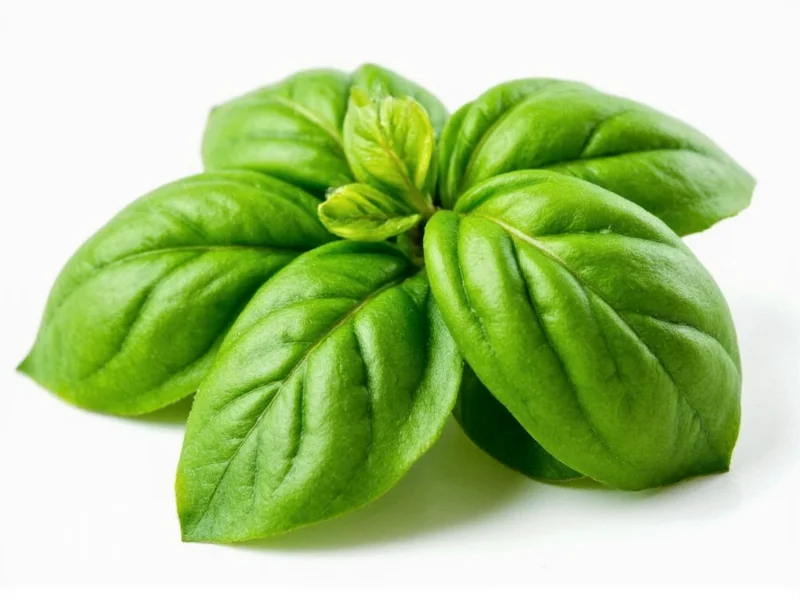Understanding herb conversions is essential for successful cooking when fresh ingredients aren't available. The difference between fresh and dried basil measurements stems from their varying water content and flavor concentration. Fresh basil contains about 90% water, while dried basil has most moisture removed, resulting in more potent flavor compounds per volume.
The Science Behind Herb Conversion Ratios
Chef Marco Rodriguez, a culinary instructor with 15 years of professional experience, explains: Dried herbs generally have three times the flavor intensity of fresh herbs because the drying process concentrates essential oils. This is why the standard conversion ratio is 1:3 when substituting dried for fresh.
When converting measurements, remember that this ratio applies to most leafy herbs including basil, oregano, thyme, and mint. However, exceptions exist for more delicate herbs like cilantro or parsley where the ratio might differ slightly.
Complete Fresh Basil to Dried Basil Conversion Chart
| Fresh Basil | Dried Basil Equivalent | Practical Measurement |
|---|---|---|
| 1 cup | 1/3 cup | 5 1/3 tablespoons |
| 3/4 cup | 1/4 cup | 4 tablespoons |
| 1/2 cup | 2 2/3 tablespoons | 1/6 cup |
| 1/4 cup | 1 1/3 tablespoons | 4 teaspoons |
| 2 tablespoons | 2 teaspoons | - |
When and How to Add Dried Basil to Recipes
Unlike fresh basil which is typically added at the end of cooking to preserve delicate flavors, dried basil benefits from longer cooking times. For optimal flavor development:
- Add dried basil early in the cooking process for sauces, soups, and stews
- Reconstitute dried basil by soaking in warm water for 10 minutes before using in cold dishes
- Crush dried basil between your fingers before adding to release essential oils
- Reduce the amount by 25% when substituting in delicate dishes like salads or garnishes
Flavor Differences Between Fresh and Dried Basil
While dried basil provides convenience, it lacks the bright, sweet notes of fresh basil. Dried basil develops more earthy, slightly minty characteristics. Food scientist Dr. Elena Martinez notes: The drying process alters volatile compounds, creating new flavor profiles while diminishing others. Dried basil contains higher concentrations of eugenol (also found in cloves) which explains its spicier notes compared to fresh.
For best results in Italian dishes like pesto or caprese salad, fresh basil remains preferable. However, for tomato-based sauces, soups, and braises, dried basil works exceptionally well and often develops better flavor during extended cooking.
Storage Tips for Maximizing Dried Basil Quality
Proper storage significantly impacts dried basil's potency and shelf life:
- Store in airtight container away from light and heat
- Keep whole leaves intact until ready to use (crush just before cooking)
- Maximum shelf life is 1-2 years for optimal flavor (vs. 6 months for ground)
- Test potency by rubbing between fingers - strong aroma indicates freshness
General Herb Conversion Guidelines
While the 3:1 ratio works for most leafy herbs, certain exceptions apply:
- Delicate herbs (cilantro, parsley, dill): Use 1:2 ratio instead of 1:3
- Woody herbs (rosemary, thyme, oregano): Maintain standard 1:3 ratio
- Spice herbs (bay leaves, sage): Use slightly less dried (1:3.5 ratio)
- When in doubt: Start with less dried herb and adjust to taste
Practical Recipe Adjustment Tips
When substituting dried basil in recipes originally designed for fresh:
- For tomato sauces: Add dried basil at the beginning of simmering
- For salad dressings: Reconstitute dried basil in warm olive oil first
- For pizza toppings: Mix dried basil with a small amount of water before sprinkling
- For baking applications: Combine with other dried spices early in the process
Common Questions About Basil Substitutions
Many home cooks wonder about alternative substitutions when neither fresh nor dried basil is available. While not ideal, you can use:
- Oregano (use 3/4 the amount of basil called for)
- Italian seasoning blend (use equal amounts)
- Tarragon (use half the amount for a different flavor profile)
- Basil extract (1/4 teaspoon replaces 1 tablespoon fresh)
Remember that these substitutions will alter the dish's flavor profile, so adjust other seasonings accordingly.











 浙公网安备
33010002000092号
浙公网安备
33010002000092号 浙B2-20120091-4
浙B2-20120091-4